Did you know that over 75% of missed shots on the pool table come down to misunderstood pool table angles? If you’ve ever felt like your luck at the billiards table runs hot and cold, it’s likely because you haven’t mastered the geometry behind every cue. In this comprehensive guide, we’ll uncover the science and secrets behind every shot so you can play pool like a champion and confidently calculate the angle on your next big play. Prepare to learn the strategies and visual cues that set pros apart!
Uncover the Hidden Science: How Pool Table Angles Shape Every Game
- Discover why over 75% of missed shots are caused by misunderstanding pool table angles. With just a few geometry tricks, you can transform your strategy and outplay most competitors.
The secret weapon of skilled pool players isn’t just a steady hand or years of practice—it’s a deep understanding of pool table angles . Every shot, whether straight or banked, depends on the geometry between the cue ball and object ball . Spotting and exploiting these angles can turn beginners into strategists almost overnight. The game becomes less about guessing and more about calculating the angle, positioning, and spin. Picture a billiard table as a living, breathing grid of infinite possibilities where each angle shifts the outcome. By mastering a handful of essential concepts, you’ll not only reduce missed shots but also enhance your command over the table itself.
Whether you’re aiming for a standard cut or an ambitious bank shot, recognizing how degrees and trajectories influence the roll is crucial. Even professional pool players rely heavily on these principles. Let’s break down the geometry that powers successful play pool sessions, showing you how simple science can instantly unlock the winning edge.
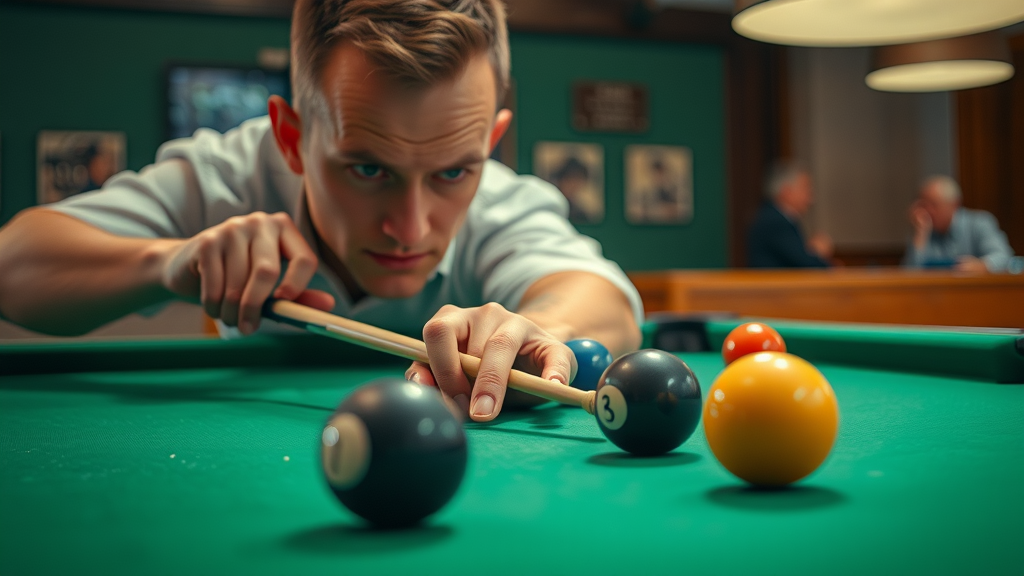
Mastering Pool Table Angles: The Strategic Foundation to Play Pool Like a Pro
What Pool Table Angles Mean for Your Success at the Billiards Table
Successfully playing pool isn’t just about eyeing the next pocket and hoping for the best. Pool table angles are the invisible lines and relationships governing every shot’s success rate. When you observe expert players, you’ll notice how they pause before each shot, mentally visualizing the perfect pathways between cue ball , object ball , and pocket. These lines—often referred to as cut angles, tangent lines, or the path of least resistance—directly determine whether a shot lands triumphantly or results in a tough leave for your next turn.
Understanding the geometry behind these angles allows players to anticipate where both the cue and object balls will travel after contact. For instance, a basic knowledge of the degree angles involved can help set up the type of shot you want, whether it's a 30-degree cut for a moderate challenge or a sharp 70-degree angle for a daring finish. By mastering these concepts, you develop the intuition to set yourself up not just for a single shot, but for a winning run.
Ultimately, your grasp of pool table angles is your toolkit for decision-making at the billiards table. Each assessment of the lay changes your strategy, making you a more adaptable, dangerous opponent.
The Importance of Calculating the Angle for Consistency
Consistency is what separates casual players from seasoned contenders. Every time you calculate the angle between the cue ball and the object ball , you forge a reliable path for your shots. The more you practice this calculation, the more routine it becomes to predict outcomes. It also reinforces pattern recognition, making each shot less about luck and more about skillful execution.
One of the best examples is the use of aiming systems—techniques that reliably map out the relationship between balls and pockets. Fractional aiming, the ghost ball method, and using the tangent line are all proven approaches. When you break down every shot into its component angles and lines, you’re able to repeat successful outcomes and troubleshoot misses quickly. The process becomes second-nature, freeing your mind to focus on cue control, power, and shot positioning.
By taking the guesswork out of angle calculation, you build crucial muscle memory. The result is a play style that's not only consistent but also keeps you steps ahead of your opponent, able to execute under pressure and seize the tables when opportunities arise.
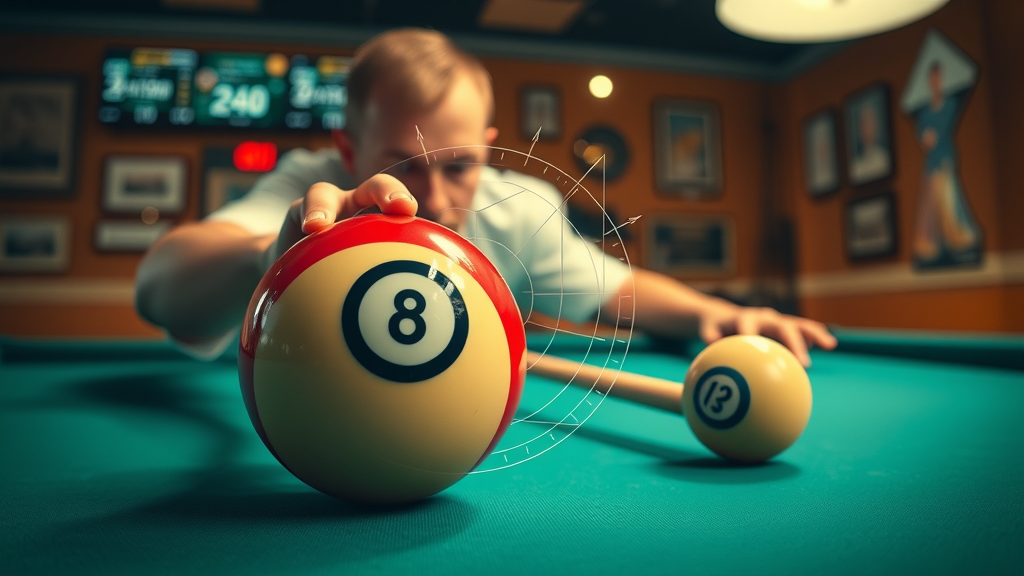
Core Principles: How to Calculate the Angle in Pool Table Shots
Understanding the Role of the Cue Ball and Object Ball
- Defining object ball trajectories
- How to align with the cue ball for ideal angles
- The physics of cue ball direction and spin
Mastering pool table angles starts with recognizing the pivotal roles that the cue ball and object ball play. When the cue ball strikes the object ball, the point of contact forms the angle that determines both balls’ destinations. Calculating these angles hinges on visualizing the trajectory or pathway each ball will follow. Effective alignment means placing the cue ball in a position where it can “see” the required portion of the object ball, often using mental overlays or even aiming tools in practice sessions.
The moment of contact is delicate—any added spin, force, or angle of attack influences the final results. For instance, striking the cue ball with “English,” or side spin, can radically alter both the tangent line and deflection of the ball, especially on challenging cut angles. By understanding these variables and repeatedly aligning the cue ball with object ball precisely, you can develop a sixth sense for shot success. The core of every pool shot, from straightforward pockets to advanced banks, lies within these calculated relationships between the cue and object balls.
Developing a sharp instinct for these trajectories involves not just repetition but also learning how to correct errors. Every missed shot is an opportunity to analyze mathematically what went wrong, reinforcing your understanding and muscle memory with each game played.
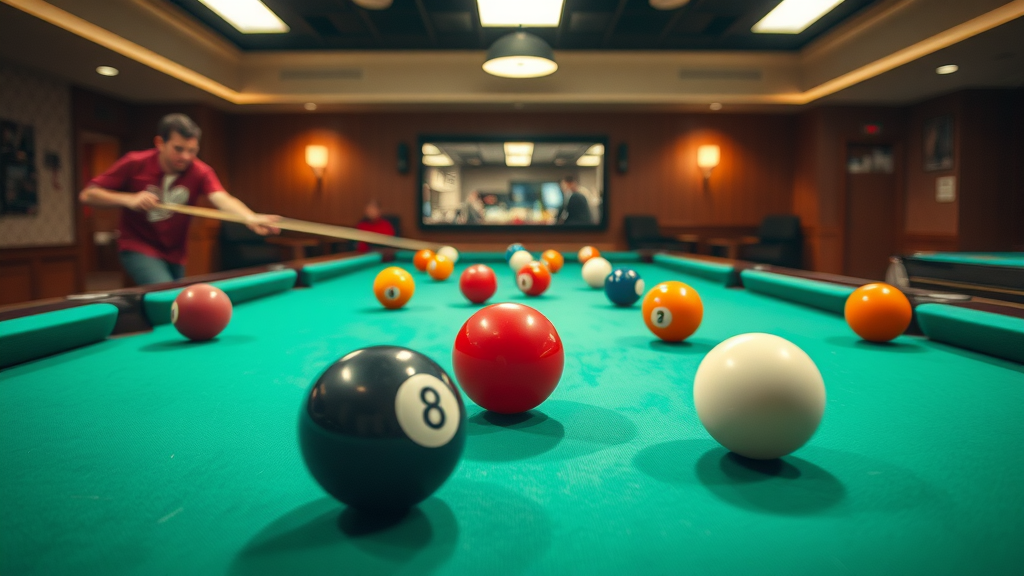
Tangent Line: Geometric Basics Every Player Needs
The tangent line is a geometric principle central to billiards and pool. When the cue ball strikes the object ball, the initial path the cue ball takes is at a right angle (90 degrees) to the line connecting the centers of the two balls, provided there is no spin or follow-through. This is known as the “tangent line,” and it predicts where the cue ball will travel immediately after impact. Understanding and visualizing this line is critical for planning your next shot and setting up consistent leaves.
Most advanced players use the tangent line to set up complex bank shots or position the cue ball for the following shot. For example, if you want the cue ball to stay put after a shot—known as a “stop shot”—you’ll aim for a dead center-hit, utilizing the tangent line’s predictable outcome. Conversely, if you want the cue ball to move along a specific angle, understanding the impact of spin, force, and cut angle on the tangent line helps you control outcomes with masterful precision.
Learning to spot the tangent line for every shot makes it easier to determine complex rebounds, positional play, and safety shots. The more you practice recognizing these lines, the more you’ll anticipate cue ball movement like a pro.
A Table of Classic Cut Angles for Every Situation
| Angle (degrees) | Description | Probability of Success |
|---|---|---|
| 0° | Straight-in shot | 95% |
| 30° | Standard cut | 75% |
| 45° | Aggressive cut | 60% |
| 70° | Extreme cut | 35% |
This table demonstrates that the wider the angle, the more challenging the shot. Mastering a range of cut angles lets you confidently tackle various scenarios, maximizing your scoring and controlling the table flow. Train with each angle in realistic game situations—repetition builds both confidence and accuracy in these crucial degrees.
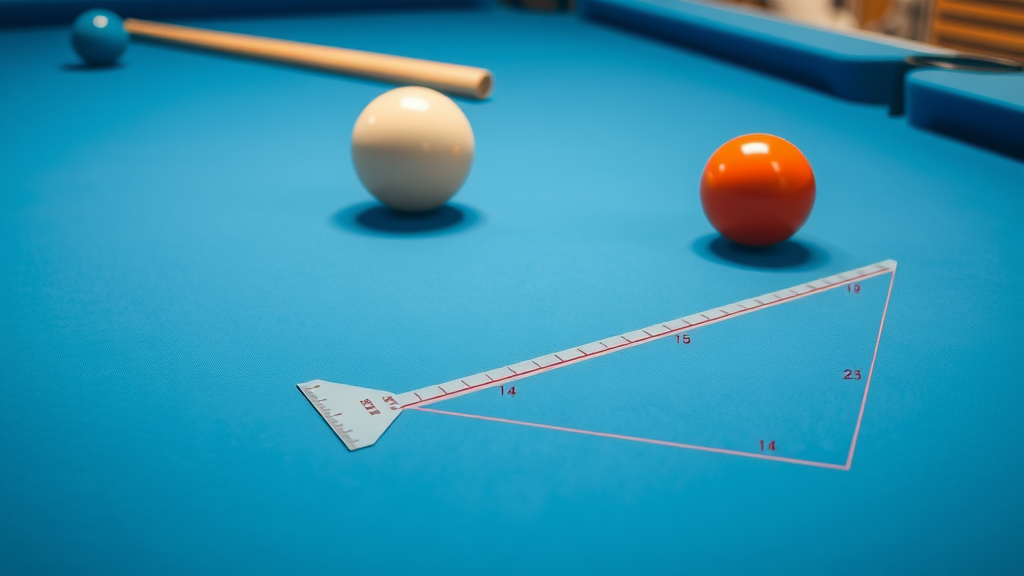
Winning Techniques: Applying the 45-Degree Rule and the 90-Degree Rule to Pool Table Angles
How the 45 Degree Rule Improves Your Cut Angle Game
The 45-degree rule is a cornerstone in the world of pool and billiards. When you aim to sink an object ball into a corner pocket with a moderate cut, aligning the cue ball to strike at a 45-degree angle from the object ball’s path grants a balance between accuracy and control. Most standard pool shots, especially those using the ghost ball aiming system, become more reliable when this angle is mastered.
Using the 45-degree rule as a reference, intermediate and advanced players can visualize both the target ball’s route and the subsequent path the cue ball will take off the contact point. With this knowledge, you not only increase your chance of clean pockets but can also plan ahead for cue ball position, setting up future shots and minimizing risky scenarios.
Practicing shots at 45 degrees sharpens your eye for geometric relationships. Over time, your ability to replicate or adjust these plays “on the fly” will separate you from less analytical players. It’s not just about pocketing a single shot—it's setting up your next move with foresight.
What You Need to Know About the 90 Degree Rule With the Cue Ball
- Why tangent lines matter for bank shots
- Using the object ball and billiards table edges to perfect aim
The 90-degree rule is simple but powerful: when the cue ball strikes the object ball with no side spin, it typically deflects at a perfect right angle (the tangent line) from the line of centers. This fundamental property is what allows pool players to predict cue ball behavior in split seconds during play. Understanding this geometric truth is vital when attempting position shots or planning a bank shot—because it lets you “see” where the cue ball will go before you shoot.
This rule is also especially useful when using the long side or short side rails for extended shot sequences. Analyzing mathematically how the cue ball ricochets using this rule simplifies even the most advanced multi-cushion shots. By applying the 90-degree rule, every calculated strike gives you a predictable path, letting you set up trick shots, safe leaves, or high-percentage plays with confidence.
Combining the 45- and 90-degree rules empowers you to not only pocket balls with greater ease but also map out the exact trajectory for subsequent shots. The best pool players in the world attribute much of their table control to geometric mastery of these fundamental angle rules.
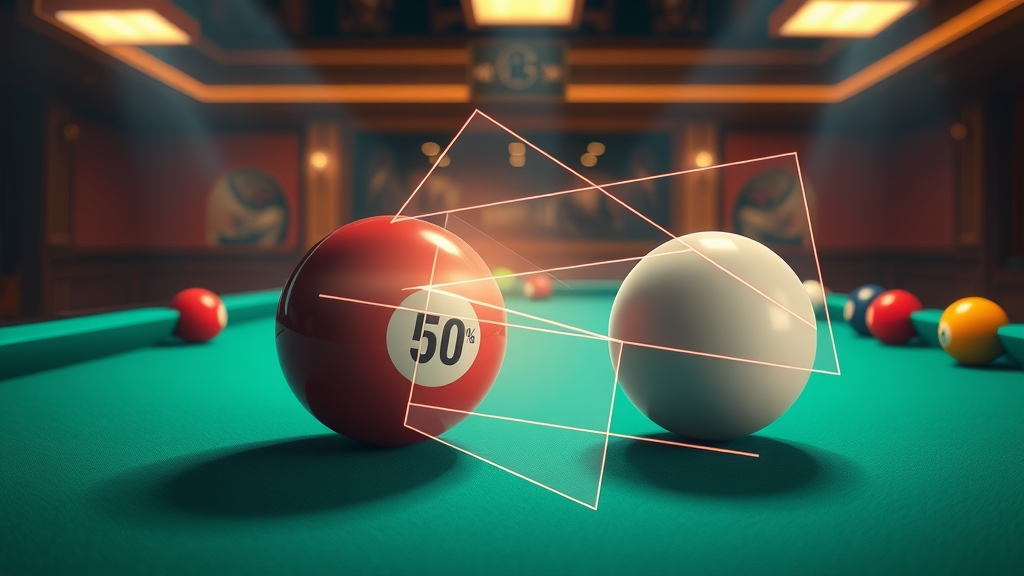
Cut Angle Mastery: The Key to Dominating at the Billiards Table
Practicing Cut Angles With Real Table Examples
Real-world practice is the most direct path to cut angle mastery. To improve, challenge yourself with progressive drills: start with 0-degree straight-in shots, then move through standard 30-degree cuts, up to more difficult 45-degree and 70-degree extreme angles. Set up the object ball at various spots and work on consistently aiming the cue ball to hit the “ghost ball”—the imaginary center where perfect contact delivers optimal results.
Using sticky notes, chalk marks, or alignment tools during solo practice enhances spatial awareness and reinforces muscle memory. Record and analyze shot outcomes, focusing on why certain angles result in more frequent pockets. Over time, you’ll notice patterns and begin adapting your strategy, making angle calculation instinctual. Drilling with friends or joining a league is another excellent way to practice under competitive pressure, ensuring your skills hold up during real play pool matches.
Tracking progress with a shot journal or video reviews also accelerates learning. Notice where and why errors occur, and don’t hesitate to revisit foundational drills. The more you demystify angles through repeated experimentation, the more dominating your billiards table presence will become.
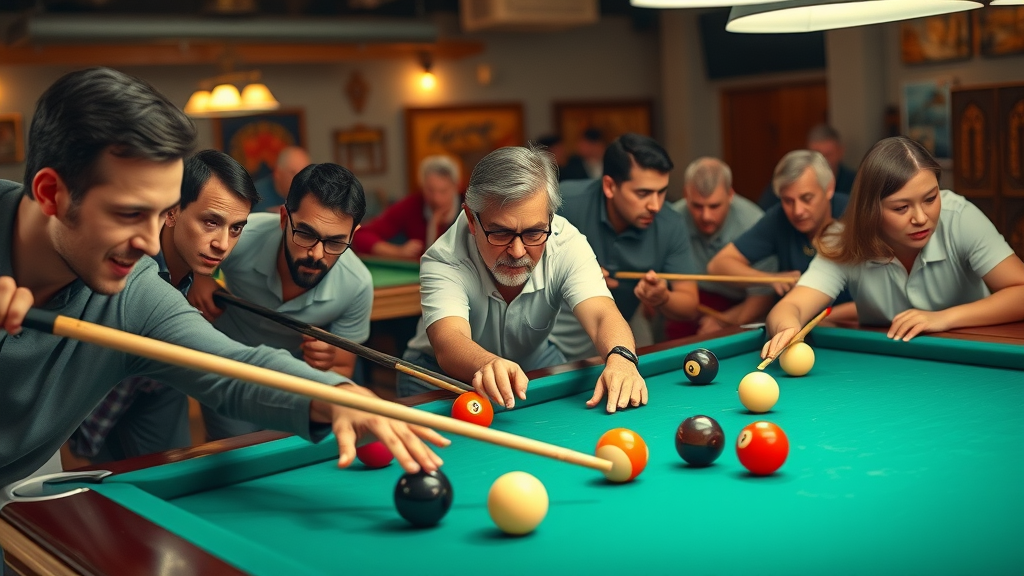
Common Errors With Pool Table Angles and How to Avoid Them
Even experienced players struggle with angle errors, which often result from a lack of alignment or failure to assess the correct cut angle . A frequent mistake is misjudging the center of the ghost ball or failing to account for English (side spin) imparted on the cue ball . Another common issue is aiming at the point of contact instead of visualizing the entire trajectory, causing missed opportunities or unintended scratches.
Correcting these issues involves dedicating time to specific aiming systems—like the tangent line method or fractional aiming—during practice. Whenever possible, slow down your shot preparation to double-check both your stance and the lines you’re visualizing. Mental rehearsal and video analysis of your games help to consistently spot and address these errors.
Remember that every missed shot is a lesson. Instead of frustration, treat each error as a stepping stone toward expertise. Soon, thoughtful correction will become a natural part of your routine, minimizing recurring mistakes and building lasting confidence.
“The geometry of billiards is the geometry of victory.” – Legendary pool champion Efren Reyes
Expert Moves: Bank Shot and Combination Strategies Using Pool Table Angles
How to Read Bank Shots Like a Pro
A bank shot is as much a science as it is an art. The key is knowing how to use the long side and short side rails strategically with angles and force. When you plan a bank shot, visualize the contact point on the cushion where the object ball or cue ball must strike to rebound at the desired degree angle toward the pocket. Consider the tangent line as your roadmap: the cue ball’s departure angle influences both speed and accuracy of the rebound.
Advanced players even factor in the “throw” (the slight deviation caused by friction between cue and object ball) and table condition—clean or worn felt, humidity, and so on. Repeating drills with various degree cuts sharpens your intuition for these variables. Start simple by banking balls into corner pockets, then advance to multiple-rail combinations as your confidence grows.
Bank shots reward deep understanding of pool table angles and the properties of the billiards table itself. Familiarize yourself with how different balls respond when struck from different positions—no two setups are ever identical, making versatility here a winning advantage.
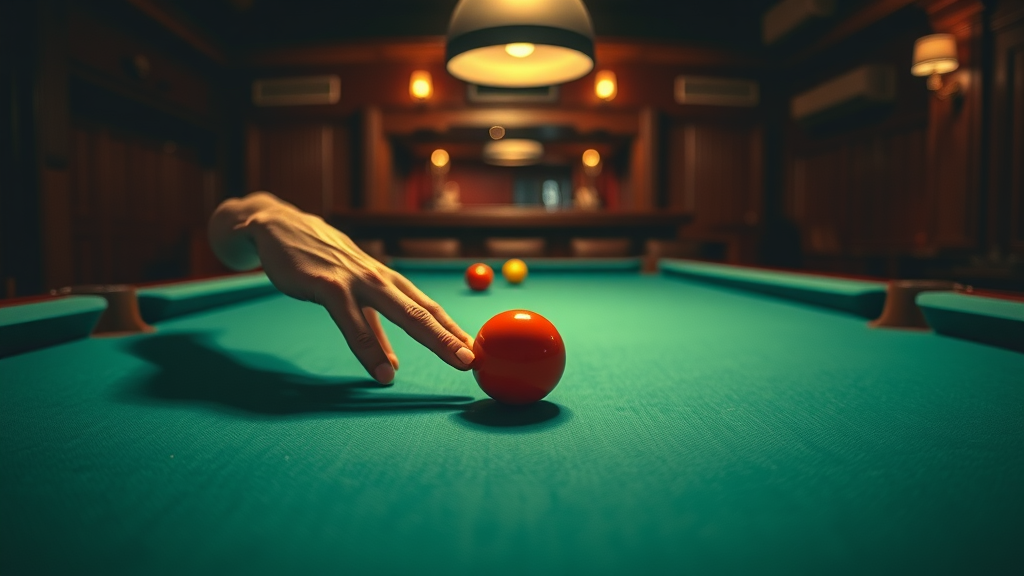
Combining Object Ball and Cue Ball Angles for Maximum Control
- The physics of deflection
- How English (side spin) affects the cue ball
- Strategic shot selection based on table layout
Combining the right object ball and cue ball angles lets you control shot outcome with surgical precision. The secret is understanding how various elements—cue ball deflection on strike, imparted spin (English), and the existing layout of billiard balls—interact to produce different ball paths. For instance, applying left or right English can help the cue ball “bend” around obstacles or follow a more favorable line after striking the object ball.
Strategic shot selection begins well before you strike the cue. Visualizing multiple steps ahead, anticipate where the cue ball will end up, not just whether the target ball gets pocketed. Effective players experiment with varying shot strengths and spins to achieve optimal positioning for the next play, especially when orchestrating multi-ball combinations or escape routes from tricky safeties.
The most valuable skill is adaptability: with a solid handle on geometry, you can respond to nearly any setup with an intentional, calculated plan. Master this, and you’ll have table control even in the most complex pool and billiards scenarios.
Video Guide: Visualizing Pool Table Angles in Real Play
- Watch a step-by-step breakdown of classic cut angles and see how pros calculate and execute difficult shots.
Pool table angles come to life in real play, especially when demonstrated by seasoned coaches. Visual guides—such as overlays, diagrams, and slow-motion replays—help translate abstract geometry into actionable skills. Observing pros as they pause, analyze, and execute challenging angles provides priceless insights. You’ll discover the subtle ways they apply aiming systems, adjust stance, and choose spots on the billiard table for maximum effect.
Video lessons are particularly effective for correcting personal mistakes. When you watch side-by-side clips of your own shots and expert demonstrations, differences in technique, alignment, and follow-through become immediately obvious. Repetition builds muscle memory, but visual cues and step-by-step guides cement your understanding, ensuring you can replicate success during high-pressure matches.
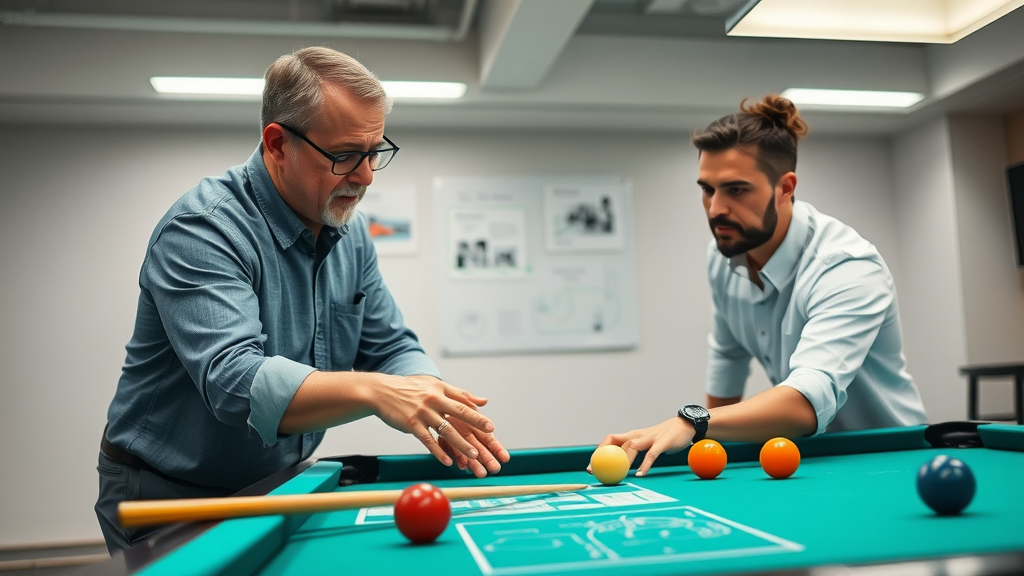
People Also Ask: Pool Table Angles Questions Answered
What are the angles on a pool table?
Pool table angles are the specific geometric measurements (degrees) used to align the cue ball with the object ball, impacting the path each travels across the billiards table. Mastering these angles can drastically improve your accuracy and shot-making ability.
What is the 45 degree rule in pool?
The 45-degree rule in pool refers to the optimal angle at which a cue ball should strike an object ball to direct it accurately into a pocket, often yielding the most consistent shot results in typical table situations.
How to get angles right in pool?
To get angles right in pool, practice visualizing the tangent line from the cue ball to the object ball, use guides or aiming systems, and drill with different cut angles. Over time, pattern recognition and muscle memory will sharpen your ability to judge angles on the fly.
What is the 90 degree rule in pool?
The 90-degree rule describes the natural path of the cue ball after striking the object ball with no spin. The cue ball typically travels at a 90-degree angle from the line of centers upon contact, which is crucial for setting up position shots.
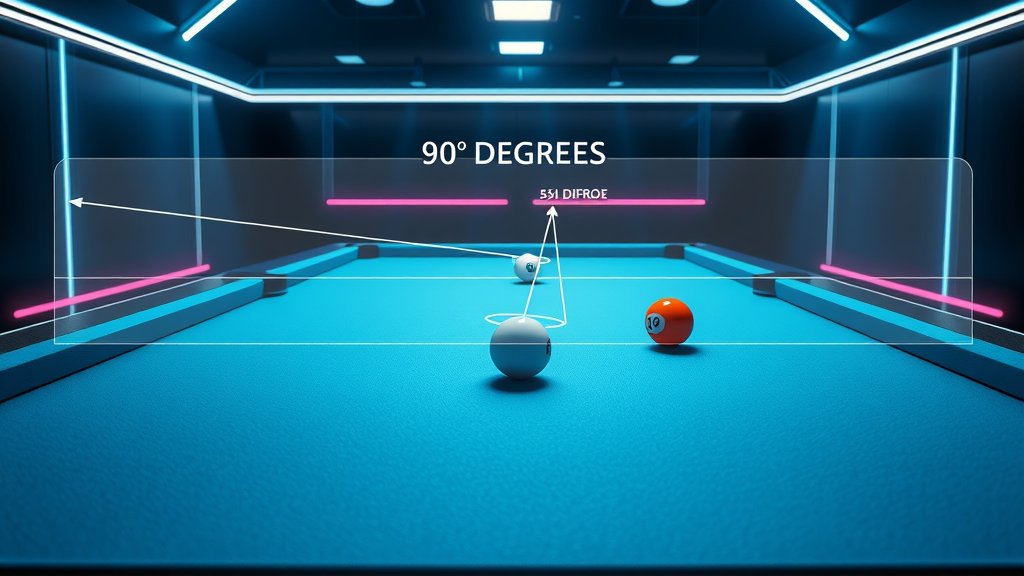
Quick Tips, Lists, and Practice Drills for Pool Table Angles
- Memorize the main cut angles (30°, 45°, 70°)
- Use chalk marks or sticky notes for practicing aim
- Regularly record and review your shots for pattern recognition
Quick-fire tips go a long way for rapid improvement. Start by internalizing the “big three” cut angles—these form the foundation for the vast majority of real play scenarios. Set up solo practice drills using sticky notes or chalk marks to physically map out expected ball paths and monitor improvements over time. Recording your sessions on video not only highlights mistakes but also showcases progress, aiding with self-coaching. Rotate drill challenges frequently to avoid falling into predictable patterns, ensuring adaptability and in-game resilience.
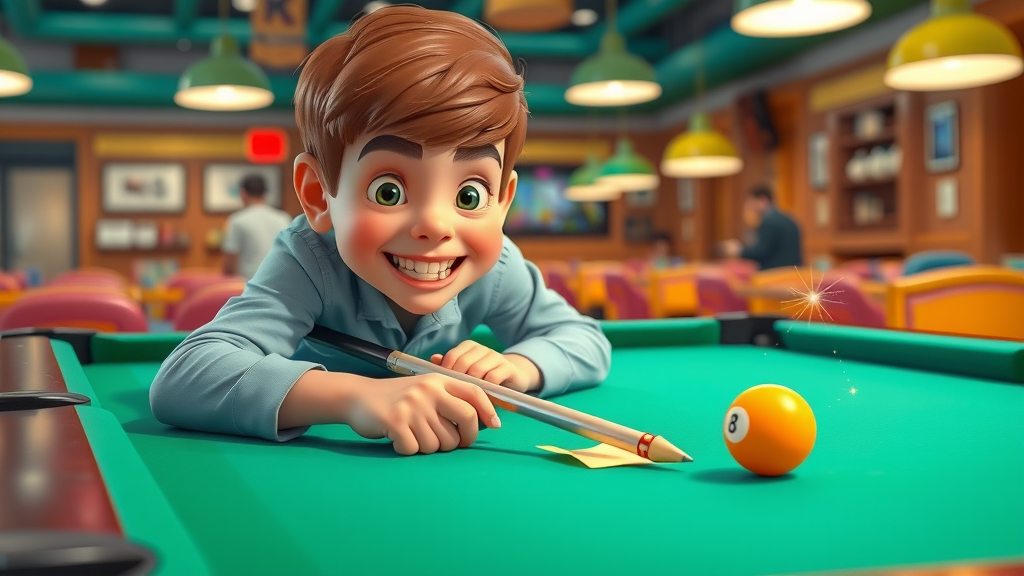
FAQ: Demystifying Pool Table Angles for Every Fan
What are common mistakes with pool table angles?
Common mistakes include misaligning the cue ball, underestimating the effect of English, and failing to visualize the cut angle. Forgetting to account for table conditions—like speed and bounce of the felt—can also alter shot outcomes. Regular analysis and forced re-alignment practice can help train away these errors.
Are there any quick ways to calculate the angle in game play?
Yes! Use the “ghost ball” aiming technique for instinctive shot lines, trial fractional aiming, or visually align perpendicular and 45-degree tracks for fast estimations. With repetition, you’ll be able to do this mental math in seconds—often unconsciously during actual play.
How does table size influence pool table angles?
Table size directly affects the optimal angles for shots. Smaller tables (bar tables) have shorter distances, which can make tight angles feel sharper, while tournament-sized tables offer more space, requiring fine-tuned calculations. Getting comfortable on all sizes helps you adapt your angle calculations quickly.
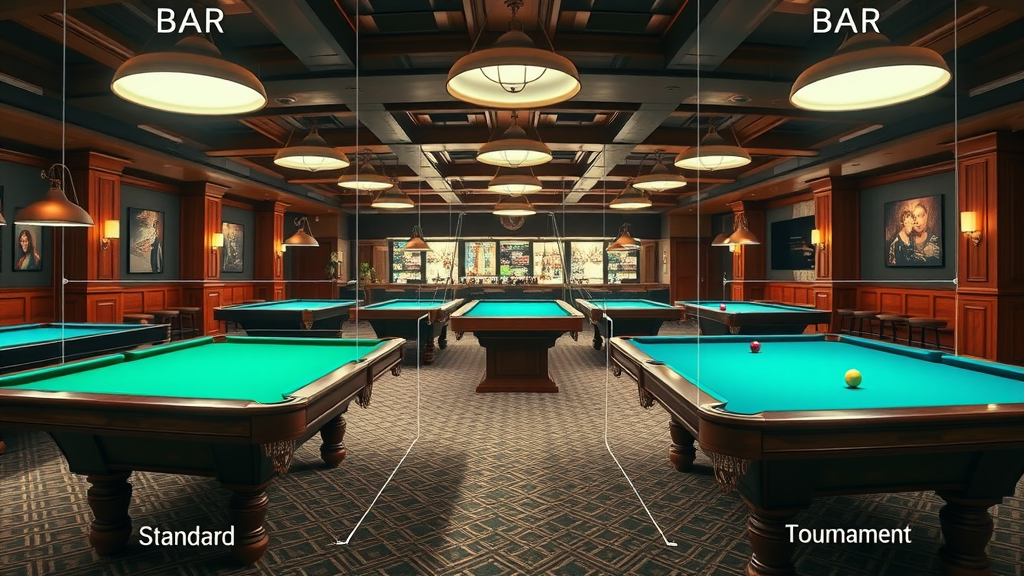
Video Breakdown: How to Play Pool With Perfect Angles—Pro Demonstrations
- Review in-action demonstrations of cue ball positioning, cut angles, and shot outcomes with slow-motion analytics.
Nothing beats watching a professional break down pool table angles, cue ball control, and critical shot trajectories in real time. Use slow-motion replays and detailed analytics to dissect what works best. Practice re-creating these pro moves to reinforce muscle memory and refine your visual instincts for playing pool at the next level.
Essential Takeaways to Instantly Improve Pool Table Angles
- Understanding angles unlocks more winning shots
- Consistent practice with the cue ball improves accuracy
- Smart angle calculation is the hallmark of elite pool players
Seize the Table: Apply Pool Table Angles and Win More Shots Today
Start practicing these angle strategies now—track your improvements, challenge friends, and enjoy the ride to pool mastery!
 Add Row
Add Row  Add
Add 
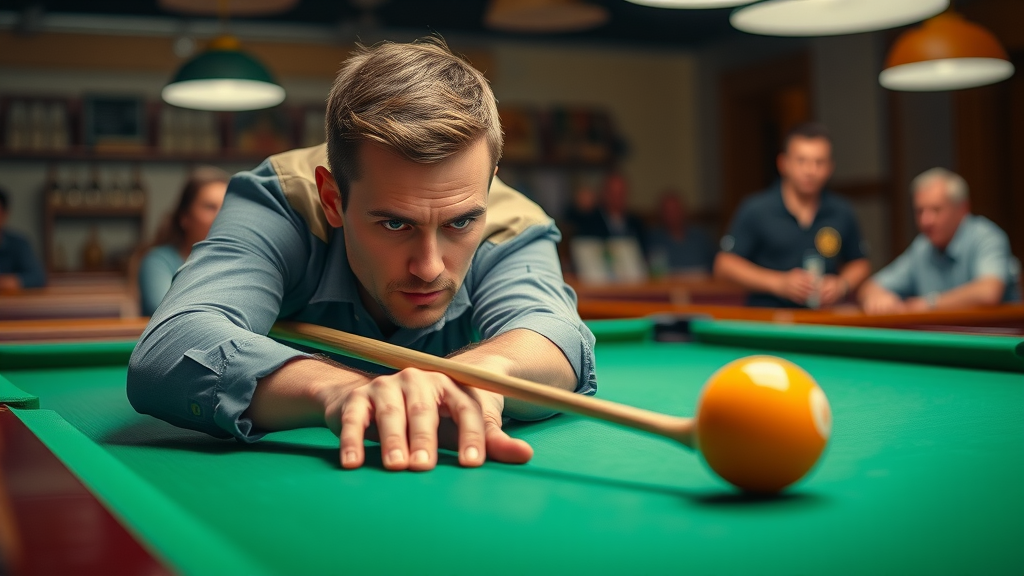
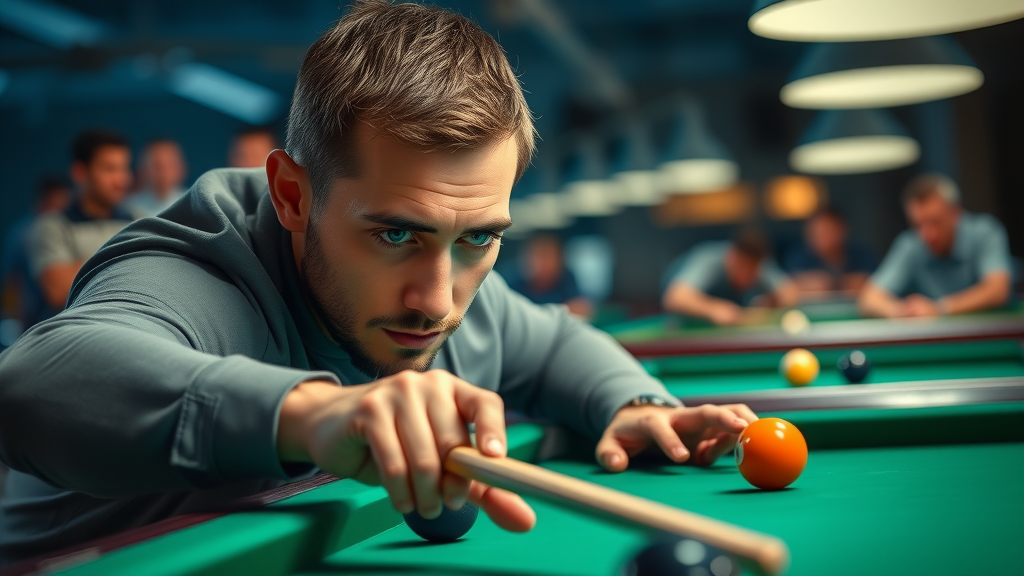
Write A Comment